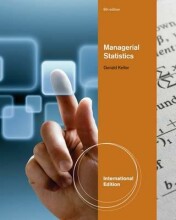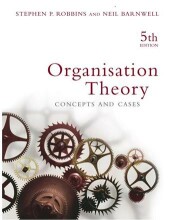Using Accounting Information
24 important questions on Using Accounting Information
What are the 2 main categories of accounting?
2. Financial accounting - generates financial statements and reports for interested people outside of the organisation, e.g. stockholders.
What are the 4 other types of accounting?
2. Tax accounting - generates tax strategy and prepares tax returns
3. Government accounting - basic accounting services which verify that tax revenues are collected and used to meet the goals of state agencies
4. Not-for-profit accounting - helps not-for-profit organisations to account for donations and expenditures
What are the tasks accountants have to fulfil?
2. Checking accuracy of financial statements
3. Supervising tax amounts, tax returns and tax payments
4. Keeping financial reports up to date
5. Helping people of an organisation in financial decision-making
6. Finding ways to reduce costs, increase revenues and improve profits
- Higher grades + faster learning
- Never study anything twice
- 100% sure, 100% understanding
What qualities does an accountant need to have?
2. Strong background in financial management
3. Computer skills
4. Communication skills
What is the difference between a public and a private accountant?
What is a CPA?
What is the accounting equation?
What is the annual report?
What are the characteristics of the balance sheet?
2. Also applies to individuals
3. Owner's equity/stockholder's equity is also known as net worth
What are the 3 types of assets?
2. Fixed assets - will be held or used for a longer period than one year. e.g. buildings
3. Intangible assets - are not physical but have value based on rights/privileges they confer on a firm. e.g. copyrights, brands, goodwill
What are the types of current assets?
2. Marketable securities - stocks, bonds or other investments that are convertible within days
3. Accounts receivable - allowing customers to make credit purchases that have to be paid back within one or two months
4. Notes receivable - customers have signed promissory notes that they pay back, but usually over a longer period of time
5. Merchandise inventory - the value of goods on hand for customers, may include raw material or semi-processed products for manufacturing firms
6. Prepaid expenses - assets that have been paid for in advance but have not yet been used, e.g. insurance premiums
What are the 2 types of liabilities?
2. Long-term liabilities - debts that do not need to be repaid for at least one year. e.g. mortgage
What are the 3 types of current liabilities?
2. Notes payable - obligations secured with promissory notes, of which only those that need to be repaid within a year are listed in the current liabilities
3. Salaries payable
4. Taxes payable
What is profit or loss?
What are sales allowances?
What are sales discounts?
What is the equation for the cost of goods sold?
What are operating expenses?
What is the statement of cash flow?
In what 3 sections in the statement of cash flows split?
2. Cash flow from investing activities - include purchase/sale of land, equipment and other assets or investments
3. Cash flow from financing activities - illustrates changes in debt obligation and owner's equity account. Includes loans and repayments, etc.
What is financial ratio analysis?
What are the 4 categories of ratios?
2. Asset management ratios - measure how effectively a firm is using its assets to generate revenues or cash. Aka activity ratios
3. Leverage ratio - measures the extent to which a firm relies on debt financing in its capital structure
4. Profitability ratios - measure the rate of return a firm is earning on various measures of investments
What is the inventory turnover ratio?
What is the average collection period?
The question on the page originate from the summary of the following study material:
- A unique study and practice tool
- Never study anything twice again
- Get the grades you hope for
- 100% sure, 100% understanding































